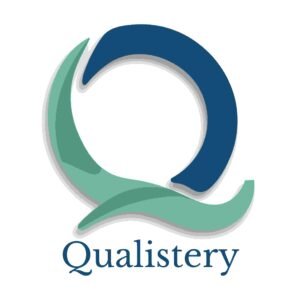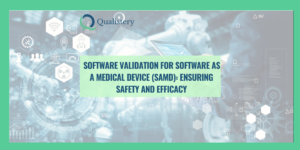Introduction
Imagine facing a decision that could alter your life forever: undergoing surgery to regain a sense of wholeness after battling breast cancer, or seeking cosmetic enhancement to reclaim confidence and self-assurance. Now, picture discovering that the very implants meant to restore your sense of self are ticking time bombs threatening your health.
This nightmare became a reality for over 400,000 women worldwide, including breast cancer survivors seeking reconstructive surgery, all of whom opted for cosmetic surgery to attain breast implants. For them, hope turned to horror as the truth unraveled: Poly Implant Prothèse (PIP), the company entrusted with their well-being, disregarded their safety in pursuit of profit.
The PIP breast implant scandal stands as an illustration of the necessity for robust medical device regulation exemplified by the introduction of the new Medical Device Regulation (2017/745). This crisis underscored the grave consequences of inadequate oversight and lax regulations within the medical device industry.
In this article, we delve into the PIP scandal, examining its repercussions and shedding light on the critical need for stringent regulatory measures within the medical device industry. We explore the events surrounding the scandal, elucidating its impact on patient safety and trust in medical devices.
The story of Poly Implant Prothèse
The rise
Poly Implant Prothèse (PIP), a French company, emerged onto the medical scene with a captivating promise: affordable breast implants that rivaled the quality of more established brands. Founded in France in 1991 by entrepreneur Jean-Claude Mas, PIP quickly gained traction in the competitive market, appealing to both patients seeking cosmetic enhancement and those undergoing reconstructive surgery after mastectomies.
As demand for PIP implants surged, fueled by their competitive pricing and claimed reliability, the company experienced exponential growth. With distribution networks spanning across Europe and beyond, PIP seemed poised for success, with its products becoming ubiquitous in operating rooms and clinics worldwide.
The deception
However, beneath the apparent of success hid a dark secret that would affect the lives of countless patients. In 2010, whispers of concern began to surface as reports of implant ruptures and unusual complications surfaced from healthcare professionals and patients alike.
Initially dismissed as isolated incidents, these early warnings soon turned on the alarms. Investigations revealed a troubling pattern of deception: PIP had been using industrial grade silicone instead of medical one in its implants, in order to maximize profits at the expense of patient safety.
The revelation shattered the trust of patients who had placed their faith in PIP’s products. For many, the realization that the implants meant to enhance their lives posed a grave risk was nothing short of a betrayal.
Impact and Fallout
The consequences from the PIP scandal were profound and far-reaching, leaving a trail of devastation. Across the globe, tens of thousands of women were left grappling with fear, uncertain about the safety of their implants and the looming possibility of explantation surgery.
Beyond the physical toll, the scandal also hit people emotionally and financially. Families struggled under the weight of uncertainty and worry. Legal fights broke out as those affected fought for fairness and accountability. Meanwhile, regulators rushed to make sure it won’t happen again.
For PIP, once heralded as a pioneer in the field of breast implants, the fallout was catastrophic. The company declared bankruptcy in 2010, with its reputation permanently damaged by the revelations of deception and fraud.
The role of regulatory agencies during the crisis
Given the scale of this particular crisis, it’s only natural to question: What steps were taken by regulatory bodies in response?
The MHRA, or Medicines and Healthcare Products Regulatory Authority, is a regulatory body responsible for overseeing the safety and efficacy of medicines and medical devices in the UK. During the PIP implants crisis, the MHRA received reports of potential problems with PIP implants as early as 2002, almost a decade before the scandal erupted in March 2010. Despite receiving 269 adverse incident reports related to PIP silicone implants between 2001 and 2009, including instances of premature rupture, the MHRA’s decided to not take action.
Although the MHRA began relaying information back to the manufacturer from 2003 onwards, there was a significant lag in taking decisive action. Also, the MHRA task force’s primary conclusions revealed that while PIP implants had a rupture rate double the average, their gel material posed no sustained risk to human health, being deemed non-toxic and non-carcinogenic. Despite French authorities’ concerns about skin irritation from PIP implants in rabbits, the expert panel favored subsequent Australian tests, without independent validation. Additionally, the MHRA’s limited analyses of the filler material in July 2010 were deemed inadequate. Subsequent MHRA laboratory tests in June 2012 concluded no health risks, but this was met with skepticism and criticism.
Moreover, while the French government took rapid action by announcing a ban on PIP implants in March 2010 due to concerns over the use of an unapproved filler, the MHRA did not recommend routine removal of the implants, leading to further uncertainty.
Another crucial mistake was that the MHRA heavily relied on findings from non-UK entities to shape their policies regarding PIP implants. Certification of these implants fell under the responsibility of the French regulator, AFSSAPS, which delegated the task to a private German company, TUV Rheinland. However, these inspections were announced well in advance, allowing the factory staff to conceal evidence of using cheaper silicone.
Overall, the regulatory agencies’ handling of the PIP implants crisis was criticized for being slow, inadequately proactive in addressing safety concerns, and overly reliant on limited analyses that failed to adequately assess the risks to patient health.
Lessons Learned and the Road to Reform
The PIP scandal served as a sobering reminder of the importance of robust regulatory oversight and ethical accountability in the medical device industry. In the wake of the scandal, regulatory agencies worldwide reevaluated their oversight mechanisms, implementing stricter controls and surveillance measures to prevent similar incidents from occurring in the future.
The lessons learned from the PIP debacle highlighted the need for vigilance and transparency in ensuring the safety and efficacy of medical devices, reaffirming the imperative of putting patient well-being above all else.
Addressing Regulatory Gaps: EU Medical Device Regulation 2017/745 (MDR)
The European Union Regulation 2017/745 on medical devices, aims to strengthen the regulatory framework for medical devices and enhance patient safety. Several articles within this regulation could have potentially helped prevent a scandal like the one involving PIP implants:
Article 10 – General obligations of manufacturers: This article outlines the general obligations of manufacturers, including the requirement to ensure that each batch of medical devices placed on the market meets the applicable requirements. Strict adherence to these obligations could have ensured the production of safe and reliable breast implants.
Article 52 – Scrutiny of conformity assessment bodies: This article establishes procedures for the designation and monitoring of notified bodies responsible for assessing the conformity of medical devices. Improved scrutiny of these assessment bodies may have prevented the improper assessment of PIP implants by ensuring rigorous evaluation processes and independent validation of the results.
Article 83 – Market surveillance: This article mandates competent authorities to conduct market surveillance activities (such as manufacturing site inspections) to ensure the ongoing safety and performance of medical devices. Enhanced market surveillance could have facilitated the early detection of issues with PIP implants and prompt intervention to protect patients.
Overall, the implementation and enforcement of these articles within the EU Regulation 2017/745 could have contributed to the early detection and prevention of the PIP scandal by ensuring stricter oversight of medical device manufacturers and enhancing patient safety measures.
Conclusion
The journey from the PIP scandal to the implementation of the EU Medical Device Regulation (MDR) 2017/745 underscores the paramount importance of robust regulatory frameworks in safeguarding patient safety and restoring trust in the medical device industry. The experiences of those impacted by the PIP crisis stand as a stark reminder of the devastating consequences that can arise when regulatory oversight falters, allowing corporate interests to trump patient welfare.
The introduction of the EU MDR 2017/745 represents a beacon of hope for a brighter future. By addressing critical regulatory gaps and bolstering safety and quality standards, the MDR aims to prevent similar scandals from occurring in the future. It ensures that patients can have confidence in the safety and efficacy of medical devices, reaffirming the principle that patient well-being must always remain first.
As we move forward, it is imperative to remain vigilant and proactive in upholding these standards, ensuring that the mistakes of the past are not repeated. By learning from the lessons of the PIP scandal and embracing the reforms outlined in the EU MDR 2017/745, we can forge a path towards a safer and more transparent medical device industry, where patient safety is upheld above all else.
To delve deeper into the complexities of medical device regulation, explore our other articles covering topics such as regulatory challenges, patient advocacy, and industry reforms.
Let’s embark on this journey together to ensure a safer and more transparent future for the MedTech industry.
With a dedication to serving the pharmaceutical industry, Qualistery specializes in hosting educational webinars that support both professionals within the pharma sector and service providers. Our commitment lies in empowering businesses to maximize their impact through engaging virtual events and strategic webinar solutions.








